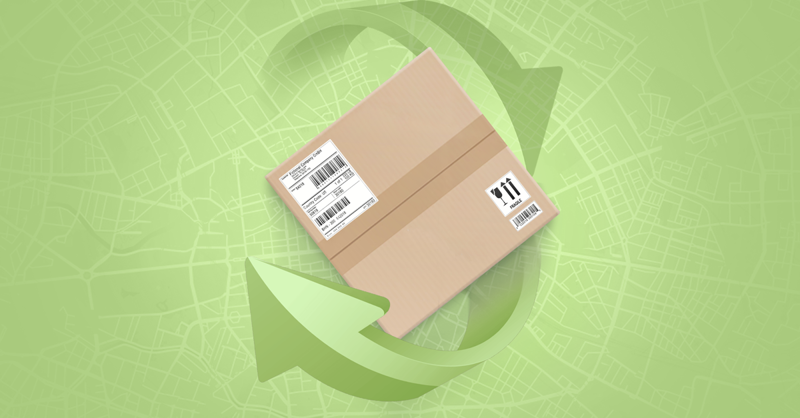*UPDATE* As we close in on the peak holiday season for 2021, retailers are busy acquiring inventory and handling last-mile shipments to consumers. However, it won't be long until we are in the full 2022 holiday return peak. And, it's expected to be a busy one.
As eCommerce sales continue to grow and a product return rate near 30 percent of sales, Deloitte expects 4 billion incremental units to be added to the annual reverse logistics pipeline by 2022. And it says it expects returns to grow by 13 billion units worth $573 billion.
With that in mind, it might be worth taking a break from the holiday scramble this year and take another look at this blog post to see how you can manage those holiday returns.
They say what goes up must come down. Well, apparently, what gets shipped must come back or so it would seem from the 2020/21-holiday return statistics.
And managing returns and keeping customers happy and costs in check is vital—especially for online merchants, who often need to incur the expenses of offering free return shipping.
According to aggregate data from hundreds of online retailers that use returns platform Loop Returns, a report in DigitalCommerce 360 said retailers saw a 41 percent jump in online returns during the 2020 holiday season. Further, the most considerable period for returns was the week between Christmas Day and New Year’s Day. Consumers initiating returns increased 70 percent on average per day compared with the daily average for Sept. 24-Nov. 29, according to Loop Returns.
2020 Retail and eCommerce Holiday Sales Soar
Of course, with sales during the November-December holiday season topping expert predictions reaching $789.4 billion (+ 8.3% from2019) with $209 billion of that from online and non-store sales (+23.9% from 2019), retailers and eCommerce returns were bound to be extensive.
While the holiday returns may be eye-opening for some, they are just a continuation of a retail and eCommerce shopping and shipping returns trend.
According to the National Retail Federation, in 2020, consumers returned an estimated $428 billion in merchandise to retailers; this is close to 10.6 percent of total U.S. retail sales 2020.
So, with online sales expected to continue growing post-COVID, what can eCommerce merchants do to help mitigate the costs of those returns?
Well, here are three things to keep in mind:
To help offset these costs, retail and e-tail logistics professionals will have to manage their shipping costs both when initially sending items and when they are on the way back.
Here are three ways to help keep returns from taking too big of a bite out of holiday sales:
- Encourage Alternatives: Offer free return shipping only for purchases over a certain amount, as many do with initial free shipping price points. Another way to keep customers who want a liberal and cost-effective returns policy happy while keeping costs in line is to provide free return shipping only for exchanges or store credit while charging for shipping on refund requests. This not only helps to reduce losses but also keeps customers coming to your store and perhaps adding to their original purchase.
- Pack for Profits: From bracketing-- buying multiple items to try on or test out looking for one that meets expectations—to ordering on a whim, customers have plenty of reasons to return items bought online. Retailers and eCommerce companies sure don’t need to give them yet another. Items returned due to damage lead the list of reasons consumers have for sending an item back. According to SaleCycle, 80 percent of consumers surveyed said they returned a product due to damage, outdistancing the second-placed reason of the purchase not matching the description by 16 percent. While damage may always happen, the right multi-carrier management solution can help retailers pack shipments efficiently. Proper packing not only reduces costs on shipping from surcharges and dimensional weight (DIM) fees, it also helps cut down on damage and reduces waste at the same time.
- Ready, Set, Return: From one-click purchasing and “buy now” options, people want it easy. And so do retailers. Automating eCommerce returns, such as with the Transtream Returns Widget, can save time and effort. From notification about the placed return request to printing the label to allow customers to track the returned item, automation will speed the process and reduce costs on your side and customer frustrations.
Returns will always be a cost of business for retail and eCommerce merchants. And as more items are shipped to customers and back, that cost is going to add up. However, by shipping smartly and managing the return process efficiently, that cost can be not only kept in check but perhaps turned into a profit.
See how Transtream multi-carrier parcel management solutions’ Returns Widget can help your organization cut the costs of returns by setting up a personalized demonstration today.
